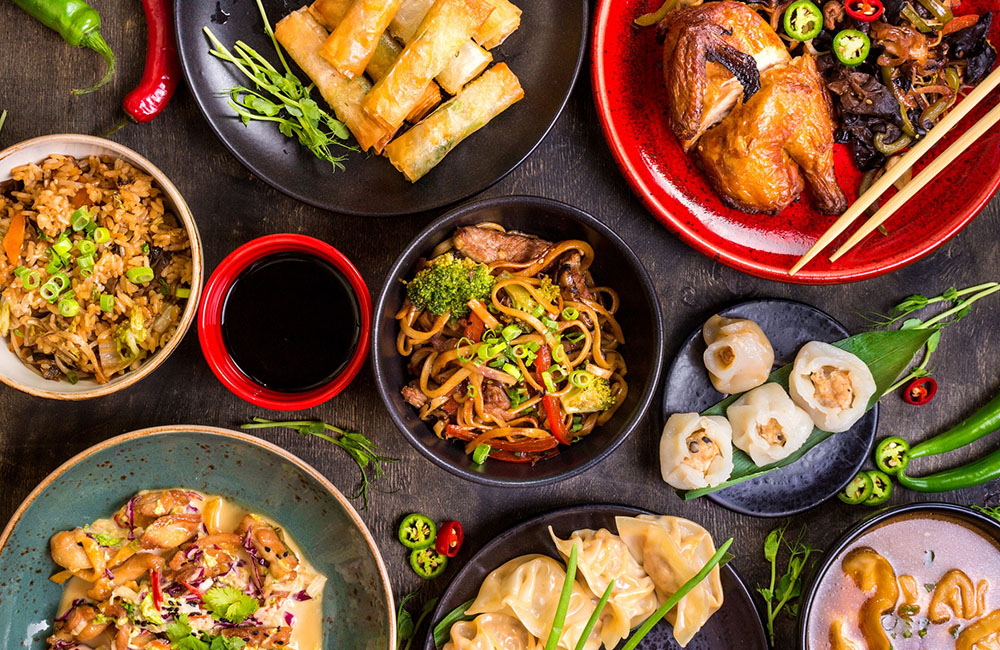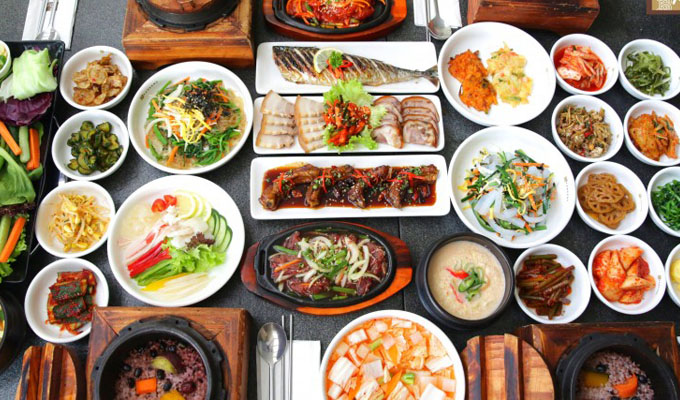Asian Food Culture: A Journey Through Flavor, Tradition, and Heritage
Asia is home to one of the richest and most diverse food cultures in the world. Each country offers unique flavors, ingredients, and culinary traditions that have been passed down through generations.
From street food delights to fine dining delicacies, Asian cuisine is a true reflection of history, culture, and community. In this article, we’ll explore the essence of Asian food culture, its most iconic dishes, and the traditions that make it so special.

1. The Importance of Food in Asian Culture
Food is more than just sustenance in Asia—it’s a way of connecting with family, honoring traditions, and celebrating life. In many Asian countries, meals are communal experiences, where dishes are shared and enjoyed together.
Some of the key cultural aspects of Asian food include:
-
Respect for ingredients – Using fresh, natural ingredients is essential in Asian cooking.
-
Balance of flavors – Sweet, sour, salty, bitter, and umami flavors are carefully balanced.
-
Symbolism in food – Certain foods are eaten for luck, prosperity, or longevity.
Explore how automation can boost your business with DUYTHIN.DIGITAL
2. Staple Ingredients in Asian Cuisine
Each region in Asia has its own distinct ingredients, but some staples are commonly found across the continent:
-
Rice – A dietary staple in most Asian countries, often served with every meal.
-
Noodles – From ramen in Japan to pho in Vietnam, noodles are a beloved comfort food.
-
Soy Sauce & Fish Sauce – Used to add depth and umami to dishes.
-
Spices & Herbs – Ingredients like ginger, garlic, lemongrass, and chili give Asian food its bold flavors.
-
Tea – A cultural symbol in China, Japan, India, and beyond, often enjoyed during meals.

3. Regional Diversity in Asian Cuisine
Asian cuisine is incredibly diverse, with each region offering distinct flavors and cooking styles.
a. East Asian Cuisine (China, Japan, Korea)
-
China – Known for its dim sum, Peking duck, and Sichuan hotpot.
-
Japan – Home to sushi, ramen, and tempura, emphasizing fresh seafood and umami flavors.
-
Korea – Famous for kimchi, Korean BBQ, and bibimbap, which blend spice, heat, and fermented flavors.
b. Southeast Asian Cuisine (Thailand, Vietnam, Indonesia)
-
Thailand – Known for its balance of sweet, sour, salty, and spicy flavors in dishes like pad Thai and green curry.
-
Vietnam – Offers fresh, aromatic dishes like pho, banh mi, and fresh spring rolls.
-
Indonesia – Features bold, fragrant spices in dishes like nasi goreng and satay.
c. South Asian Cuisine (India, Pakistan, Sri Lanka)
-
India – Famous for its rich curries, biryanis, and tandoori dishes, heavily spiced and flavorful.
-
Pakistan – Known for meaty, aromatic dishes like kebabs, karahi, and haleem.
-
Sri Lanka – Offers spicy, coconut-based curries and rice dishes like kottu roti.
Want to optimize your digital strategy? Check out DUYTHIN.DIGITAL
4. Traditional Cooking Methods
Asian cuisine uses varied and time-tested cooking techniques that bring out the best flavors in each dish. Some popular methods include:
-
Stir-Frying – A quick and high-heat cooking method, commonly used in Chinese and Thai cuisine.
-
Steaming – Preserves the freshness of ingredients, often used for dumplings, buns, and fish.
-
Grilling – A popular method for making yakitori (Japan), satay (Indonesia), and Korean BBQ.
-
Fermentation – Essential in creating kimchi, soy sauce, miso, and fish sauce.

5. Asian Street Food Culture
Asia is famous for its vibrant street food scene, where local vendors serve delicious, affordable snacks and meals. Street food is an essential part of daily life, offering authentic flavors and cultural experiences.
Some of the must-try Asian street foods include:
-
Takoyaki (Japan) – Crispy octopus-filled dough balls.
-
Banh Mi (Vietnam) – A flavorful fusion of French and Vietnamese flavors in a baguette.
-
Xiao Long Bao (China) – Juicy soup dumplings that burst with flavor.
-
Satay (Indonesia & Malaysia) – Grilled skewered meat with peanut sauce.
-
Roti Canai (Malaysia) – Flaky, buttery flatbread served with curry.
Take your business to the next level with automation from DUYTHIN.DIGITAL
6. Food as a Symbol in Asian Culture
Food plays an important symbolic role in Asian traditions, festivals, and celebrations. Some examples include:
-
Longevity Noodles (China) – Eaten during birthdays for a long life.
-
Mochi (Japan) – A staple during New Year celebrations for good luck.
-
Dumplings (China, Korea) – Symbolize wealth and prosperity, especially during Lunar New Year.
-
Mooncakes (China, Vietnam) – Shared during the Mid-Autumn Festival as a sign of family unity.

FAQs
1. What makes Asian food unique?
Asian cuisine is known for its bold flavors, fresh ingredients, and balance of textures. Each region offers distinct cooking styles and cultural influences that make Asian food incredibly diverse.
2. What are the most popular Asian dishes?
Some of the most famous Asian dishes include sushi, dim sum, pho, curry, and Korean BBQ.
3. How does Asian cuisine balance flavors?
Asian cooking follows the five-flavor principle, balancing sweet, sour, salty, bitter, and umami in dishes. This creates depth and harmony in every bite.
4. Why is rice so important in Asian cuisine?
Rice is a dietary staple in Asia, serving as the base for many meals. It symbolizes prosperity and nourishment and is deeply ingrained in cultural traditions.
Final Thoughts
Asian food culture is a beautiful blend of history, tradition, and flavor. Whether you’re indulging in a bowl of ramen, savoring street food, or celebrating with festival dishes, every meal tells a story.
Want to streamline your business operations, digital marketing, or automation tasks?
Visit DUYTHIN.DIGITAL for cutting-edge automation solutions today!




